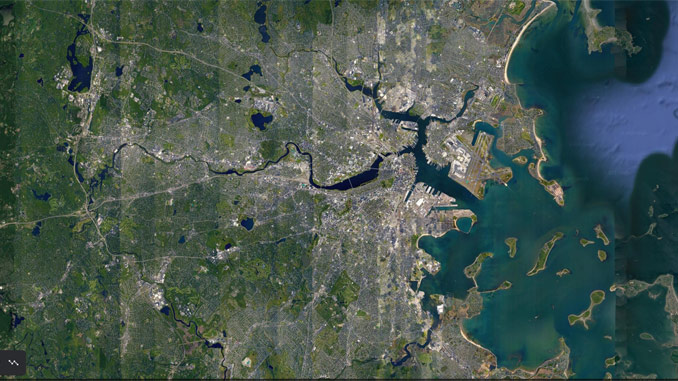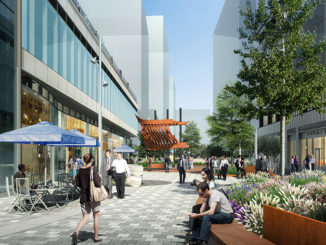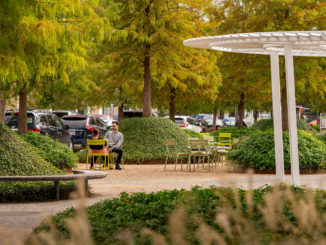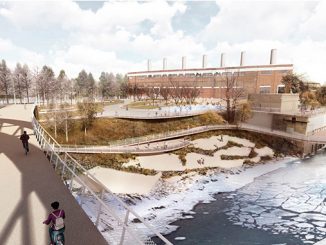
The City of Boston recently announced the consultants selected to develop Boston’s Urban Forest Plan. Boston landscape architecture firm Stoss Landscape Urbanism and forestry consultant Urban Canopy Works have been selected to co-lead the effort to develop the City of Boston’s first Urban Forest Plan. Stoss was awarded the contract with Urban Canopy Works as a subconsultant. The 20-year plan will set citywide goals for canopy protection, be responsive to climate change and development, and enhance the quality of life for all Bostonians. The Urban Forest Plan will be a collaborative effort that includes a community advisory group, interdepartmental working group and community outreach. Recognizing that environmental injustice exists in Boston, the planning process will embed support for communities that have been disproportionately impacted by environmental stressors. Planning will touch upon a wide variety of topics, such as ecology, design, policy, practices and funding.
“Trees are an important part of making Boston’s communities resilient. This plan is the first of its kind in Boston, and it will expand and protect one of our most precious natural resources, while prioritizing the needs of our residents,” said Mayor Walsh. “Developing an urban forest plan is important to ensure our tree canopy in Boston is equitable, responsive to climate change and ensures the quality of life for all Bostonians. This collaborative project with Stoss Landscape Urbanism and Urban Canopy Works will prioritize community input to ensure that residents in our neighborhoods have a central voice in this process.”
“It’s no coincidence that many of the communities disproportionately impacted by poor air quality and the urban ‘heat island’ effect, also have inadequate tree cover,” said Commissioner Woods. “We’re excited to collaborate with these partners to find opportunities for growing tree canopy in the places that need it most.”
The project team will also work closely with a community advisory group and an interdepartmental working group with input from residents, community organizations, businesses, and institutions. Kicking off in spring of 2021, the planning process will take approximately one year to complete. The community advisory group will be formed in late spring of this year. The public will have an opportunity to weigh in on the plan in early fall, after the assessment and scoping phases.
One of the project tasks, along with scoping the project and assessing the existing state of the canopy, will be to develop a plan for engaging the community. The outreach plan will prioritize populations that have been disproportionately exposed to environmental stressors; be sensitive to differences in cultures, economic realities, and built environments across Boston; incorporate City of Boston Language and Communications Access guidelines; consider equity and accessibility in both in-person and online engagement strategies; and retain flexibility to adapt engagement strategies in response to changing public health recommendations.
Joining Stoss Landscape Urbanism and Urban Canopy Works, the plan will be developed with contributions from American Forests, Nitsch Engineering, PlanITGeo, local experts, and the public. Dr. Neenah Estrella-Luna, a social equity and anti-racism consultant, will support the effort to make environmental justice the foundation of the project.
“Our job is to fuel the project’s success by coordinating efforts between all the partners who each bring their own unique expertise,” said Stoss’ Amy Whitesides and her team. “The ultimate goal is to maximize the health of Bostonians and their environment. We’re proud to work with the City of Boston on this shared commitment to Boston’s Urban Forest Plan.”
The final plan document will highlight policy tools to control canopy loss on private property, as well as guidelines for protecting and expanding canopy on public property, like streets and parks. Over the past five years, tree removals on residential, private, and institutional property have been the main contributors to canopy loss. The finalized plan will provide recommendations for canopy protection and expansion through proposed changes to the development review process, as well as new policies and ordinances, including draft language and methods of enforcement aimed at protecting and expanding the tree canopy.
The Urban Forest Plan is a critical piece of the vision for the City’s tree canopy goals laid out in Imagine Boston 2030 and Climate Ready Boston. The City launched Climate Ready Boston in 2016 to develop resilient solutions to prepare for the effects of climate change: flooding due to sea-level rise, increased storms, and extreme heat. Urban Forest planning is closely aligned with Climate Ready Boston, as trees provide cooling shade, reduce the risk of heat illness, and are key to making Boston’s communities resilient to climate change. Targeted investments in green infrastructure will be important, as heat island exposure is greater in neighborhoods with limited green space. The City of Boston Environment Department will be launching a heat resilience planning study this spring.
In addition to the $500,000 budgeted for the Urban Forest Plan, historic investments in Boston’s tree canopy this year will also support the hiring of a new arborist and the added capacity for up to 1,000 additional tree plants, doubling the total capacity to 2,000 trees planted per year. The Tree Canopy Assessment, released in September, supports efforts to increase access to trees and their benefits in “under-treed” neighborhoods, as a part of the City’s commitment to environmental justice. Information provided in the report is foundational to the Urban Forest Plan, as well as future policy and planning efforts.
Text: City of Boston
Image: Google Earth



